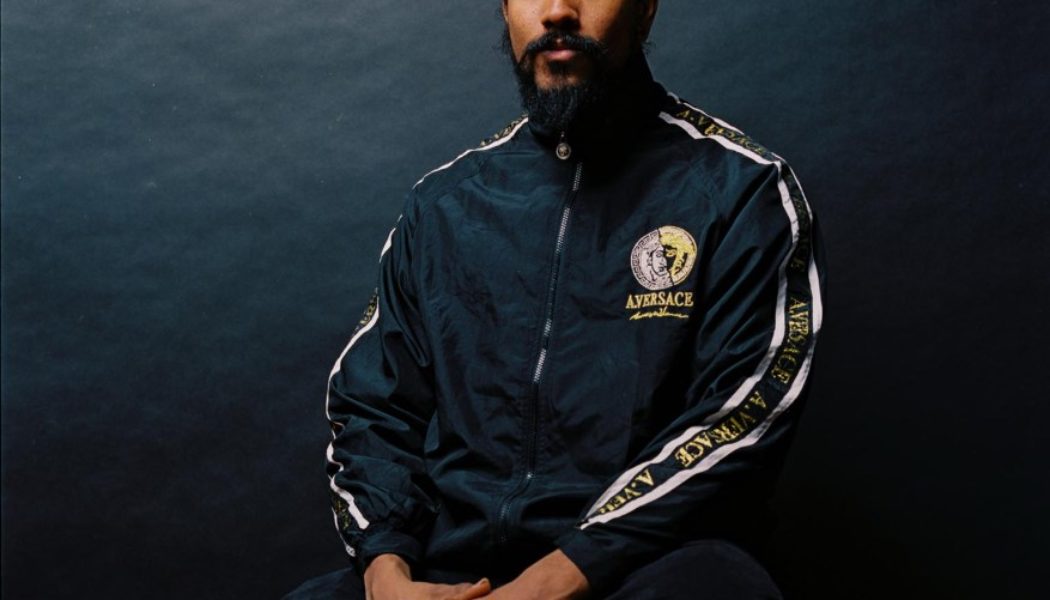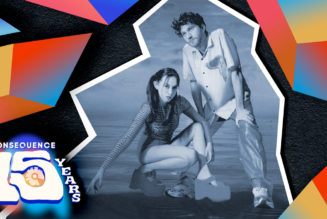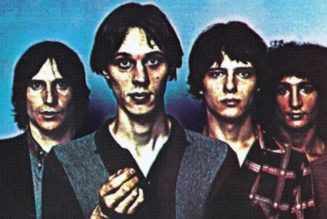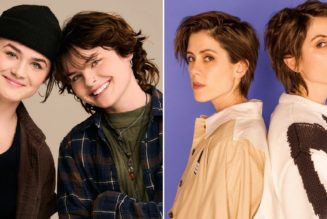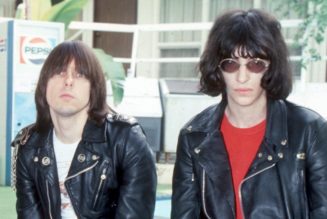W
elcome to the first installment of Rolling Stone’s new monthly indie–rap column ‘No Filler’
Rumors of hip-hop’s demise have been greatly exaggerated. All hip-hop fans need to do is push past the Top 40 bubble and find the under-the- radar artists who are making the rap world so interesting. Here are four projects, and five singles, you should check out and send to that friend of yours who keeps complaining that “good rap is dead.” They’re just not looking hard enough.
The month, I wrote about projects from Chris Patrick, Gabe ‘Nandez, and Semiratruth, and singles from others, but first I spoke with Brooklyn-born, New Orleans-based MC Cavalier, who found himself at a crossroads during the covid quarantine. He was a new dad — and a single father at that. His 2018 Private Stock project had experienced a resurgence spurred by his single “Open Season,” which spoke to the police brutality that the entire world was protesting against.
The project comes after a prolonged period where Cavalier says he lost his creative fire due to the demands that the industry, especially DSPs, put on artists. “Spotify, in my opinion, doesn’t seem to have much distinction from OnlyFans,” he contends. “It’s basically like I [have] to hoe myself to some degree, consensual or not.” For Cavalier, who became an underground darling after dropping Chief in 2014, the renewed attention in Private Stock stirred anticipation for a new project. But he wasn’t in the mood to create, especially for platforms like Spotify, which he feels forces artists to operate on restrictive terms to thrive in their algorithm.
Creativity vaults many artists out of their personal ruts. But for Cavalier, his art — and the industrial exploitation of it — was causing his dillemna in the first place. The pressure he felt to make music for the sake of figuratively feeding the beast weighed on him, and he recalls being as close to personal crisis as he’d ever been.
“I had a moment where I was rapping Freeway’s ‘What We Do’ verse and crying. And then I was like, ‘Something’s fucking wrong with me right now,’” he remembers. “I also had a space where I would record 30 takes, and then I would wake up and erase them all. Whatever that cycle was, that’s where I had to be like, ‘Nah, this shit is a dub. Something is wrong.’ And that’s [what] I started addressing.”
While in New Orleans, Cavalier met a photographer who encouraged him to pursue time-lapse photography. Through that patience-stoking procees, his creative angst faded away, and inspiration naturally returned, manifesting in what’s become Different Type Time. The 21-track album was released in April on Backwoodz Studios. On Different Type Time, his dense, abstract lyricism forms the shafts and columns through which he alternately reflects on his life and drops gems like, “loud and corny the new clout” on “Custard Spoon.” Cavalier drops a range of flows over a diverse, Quelle Chris-crafted canvas from the jazzy “Pear” to the entrancing “Come Proper.” Cavalier heeded his own title. I talked to him about his new project and his artistic process.
—-
How do thoughts generally turn into songs for you?
Mainly making sense of experiences, either my own or observed. And for me, how I process things, I have to find what connects. It helps me contextualize and process my reality. A lot of writing is me reflecting on past or affirming future. Processing present, but it’s real time. And there’ll be a lot of references and things that become songs, but they’re very specific. There’ll be a line that only the person I’m talking about really knows what that means. But my hope is that in the collage of it all, it still can connect to someone who doesn’t have to know that person to feel what it means.
When you say connections, do you mean necessarily resolutions and answers or it’s just parallels?They’re like threads. Maybe for others they wouldn’t have threaded those things together. Sometimes I’m like, “How’s people not seeing that thread?” I’ll have days where let’s say you wake up, and your alarm clock is a clock radio or something, and it plays a song. And as you were getting ready, one particular song lyric stuck in your head, and it was about white lilies. And then, you’re on your way to work, and you happen to pass white lilies while you was on the phone. Then later on that night, you get an email, and the subject line says something that when you glanced at it real quick, you thought it said white lilies, but it said something [else]. Now, for me that day, I’m like, “Oh, okay. What’s white lilies about now?” That’s how I’m processing a day. Otherwise, it’s Groundhog Day, man.
You’re are Brooklyn born, New Orleans based. What made you make that move to New Orleans and when did it occur?
It was just a matter of me following my gut and keeping in union with the other artists I was around at the time, which was Quelle Chris and a producer named Iman Omari. We had hit a space of recognition I feel that was more than musical. I think it was like a strong camaraderie, almost a brotherhood in a sense, that saw the value in being around each other and motivating each other creatively. And at the time, Quelle would often be on the West Coast, and I lived in Brooklyn, and we would do a lot of bi-coastal transport to be around each other. And Iman Omari ended up heading to New Orleans through his own personal life changes and through the work he was doing with Solange. And we came out to visit him. I was staying a couple of months, we worked on music. And then the next year, I ended up moving there.
It was like I got challenged by my creative peers. They were like, “In essence, you have nothing holding you back to stay.” There was no point in resisting that. It’s like, what am I staying for? To be complacent? And if indeed being there together was stoking creative fires, it’s worth going. So I pretty much packed up my computer, and a bag of clothes, and was driven back down there by the homies.
What did that environment do for you, personally and creatively?
It upped the ante. New Yorkers don’t often leave New York like that, at least the New Yorkers I know. New York is this die-hard bubble, “I’m from New York!” kind of energy. When I got to New Orleans, there seemed to be a upturn because we got to work on a lot more. In that time period, I worked on what became Lemonade, [and] what became Private Stock. I wrote songs on Iman Omari’s IHY album, songs that ended up on Quelle Chris’ Being You Is Great album, songs that ended up on a couple other Quelle albums. We just made a shitload of music.
I didn’t know anybody in New Orleans, so it wasn’t like there was this other social dynamic. We would just be there together living or creating for the first months I was there. It seemed very apparent at that time, that chapter that my life was changing.
Is there a distinct creative flow from being in Brooklyn versus being in New Orleans or being elsewhere?
I think some of the songs I made, I don’t know if I would’ve made them. Even though they’re about Brooklyn. The vantage point of being away allowed me to look back on Brooklyn with a different lens or look back on my experiences with a different lens. And also, the threads. Processing why I was in New Orleans. What was it doing to me energetically. I’m a person who can be a sponge. And the Private Stock record shows, it’s clear that I’m in New Orleans by that time. The voices, the sounds, the influences, even how jazz is centered. I don’t think I would’ve made that project if I stayed in Brooklyn.
Are there particular songs or lyrics that you can point to on Different Type Time that reflect looking back on Brooklyn from a different perspective?
There’s points in Different Type Time where I’m processing my upbringing in some respects. There’s a song called “Told You” where I’m talking about explaining to my dad why people would get murdered over sneakers, or how the come up was getting clothes from Burlington Coat Factory, and trying to get home without getting robbed, or how the first time I seen ski goggles was on the train in Brooklyn, not at a ski lodge. [With] songs like that your vantage point is different. And it’s also, it’s not listful, but it’s maybe a touch nostalgic. I think nostalgia can be a good element to tap into for people in songs.
Where was Different Type Time recorded?
Different Type Time is the byproduct of me getting back into space to be comfortable creating again in an environment where the industry or certain mechanisms in it are asking you to pump out work at a rate to match unregulated consumption, right? The more songs you put on Spotify, the better. I felt conflicted by that deeply so. That shit was bordering breakdown levels. Because as an artist, I was like, “This is not something I feel comfortable participating in when I know the investment I make into [creativity.]”
In that therapeutic process or whatever you want to call it, I started taking photographs. I started traveling. And that’s how Different Type Time began. Some of it started with photos. It didn’t even start with songs. Different Type Time is also a visual project; there’s visuals for pretty much every song on the record. I tend to create multimedia, and the process of filming time lapses made me have to be still. It made me have to be patient. I’m taking hundreds, sometimes thousands of photos to get seconds or minutes of footage. And I started just moving around and doing that. I also had to evacuate after Hurricane Ida. And one of the communities that was very hospitable was the Bay Area, where I had just recently gone to start making some music and recording.
What are the first songs that inspired the album?
The song called “Déjà Vu” on the project was one of the first recorded, and I didn’t know what it was for. I just recorded it. It felt freeing, I guess. And it’s also dense. It’s one of them rapper’s rapper type [songs]. It happened pretty fluidly, and I sat on that. I didn’t know what it was going to be for. And then, I did “Pears.” I was collaborating with this brother in New Orleans who was the one who opened me up to the time-lapse. And he was the one that pushed me to be like, “You could do this other stuff.” I think he sensed that I wasn’t feeling in alignment with all of this. And he saw there was a camera in my crib that I wasn’t using that I don’t even remember where it came from.
We went and did a time-lapse that became the video for “Pears.” And I was like, “Oh, that’s interesting.” When you’re doing that type of filming, you don’t necessarily know what the result is going to be. And for someone like me who likes control, it’s not a comfortable space, but you got to step into it. And the brother would be like, “Yo, just trust the process.” As cliche as that is, that was like a lifeline. Like, “Oh, okay, I’m not tripping. Just go what my gut tell me to do, and trust [that] the process of this will take me somewhere.”
Like the the Pears, the combination of the time-lapse photos, and whatever we shot, and Pears, that happened. And I was like, “Oh, okay. This is a thing.” And then, there were instances where the time-lapse happened, or the filming happened before the song happened. There was a part point earlier in the project where the visuals happened. I was catching up to the visuals with the songs.
When you say catching up, did you have to hear the right beat that felt like it paralleled a visual?Yeah, or we would go somewhere and shoot a time-lapse, and he’d be like, “What’s that one for?” I’d be like, “I don’t even know,” earlier in the process. So there’s no rap features on the project. But there’s other people you hear rapping. The two primary people you hear rapping are unhoused men that I met filming these time lapses. You see what I’m saying? I wouldn’t have met them if I didn’t trust my gut to go out and trust the process, so to speak.
I went to your website, and I saw your bio. And it referenced you as “the rapper who everyone knew was so dope that you had to blow, but who never seemed concerned with any of that.” How accurate is that?
Yo, that bio came from Backwoodz. And that bio, when I read it, was further proof that I made the right decision in putting out this record with Backwoodz. Because I could have been with the biggest label in the world, and they wouldn’t have known those things about me. Even though I didn’t have many personal linkings with Billy Woods or anything like that — he’s ahead of me peerwise. But that bio showed that he was at a vantage point to observe what I was doing as a young artist coming through that scene. I guess it is accurate. I didn’t realize that that’s how it looked outside of me. All I knew was what I was doing. It’s not so much that I didn’t care. I think I just made certain decisions that weren’t in line with the rapid success.
I was doing shit to get money that is of high risk. And I was doing those things because I felt like money shouldn’t be the barrier for us to create art and put it out. That was my inner conflict. I felt like I had a lot of peers who were talented, but they couldn’t do certain things because they didn’t have the fee for entry. And I was like, “Nah, fuck that.” So I participated in a lot of things, for better or worse, that eliminated that financial hurdle. At the same time, what I didn’t realize is the cost of that was like, now, I didn’t realize how much time, and energy, and physical presence I was investing in that.
Meeting Quelle helped start pulling me away from that, and putting the attention back into the music, which was the point in the first place. So that’s some of it. It wasn’t that I wasn’t concerned or I wasn’t trying to be on the scene. I was like, “Y’all niggas ain’t getting no money.” Especially in the Blog Era. It was like, I had niggas around me that was like, “Yo, I’m popping on these blogs.” And at the time, I was like, “Yo, none of my niggas listen to your music. And two, you have no money. So what is the point?” And maybe that made me seem like a nigga with a chip on my shoulder. I don’t know. But I wanted to make something that mattered, yo.
How hands-on would you say you are in the production process? And not even just the production, but just even vocal clips, the movement…
I’m like all the way. First of all, most vocal clips on the albums that I put out that people hear, those are people actually talking to me. They’re not downloaded clips. You might hear that occasionally on some projects. But with me, 95% of the time, if you hear someone talking, they talking to me.
And Quelle is my most trusted person to help me execute things that are outside of my skill set as a producer or engineer, because that’s not my base. Someone like Quelle, [in] that Detroit scene, you got a lot of hybrid talent niggas. Whereas like New York, it’s only later on you started seeing people who both rap and produce. But I could come to Quelle, and be like, “Yo, man. I got this sample and I got this guy that was talking to me in the street about this. And I want to put it together like that.” I don’t have to explain shit to Quelle because he knows me well, and he’s done this with me on multiple albums.
I’m extremely hands-on with arrangement because I don’t necessarily bow to traditional songwriting format. So there’s always dialogue with the producers like, “I wrote it like this. So when I say this, after that, the drum going to come back.” To me, those subtle things. The listener may not always know. I’m a Michael Jackson fan. That nigga put his heartbeat on records. The audience don’t know he did that, but he knows he did that, because that shit fucks with your heartbeat. Like me and Quelle be fucking with nigga’s heartbeats in a performance.
Albums of the Month: Three recent records you should listen to
Gabe ‘’Nandez, Object Permanence
In May, Gabe ‘Nandez released Object Permanence, a collaboration tape with Jersey producer Wino Willy. The two crafted a thoughtful, skillful display of rap that proposes Gabe ‘Nandez as a chief antithesis to tired claims of lyricism’s death. Those looking to hear a rapper simply go in over dope beats can scour his prolific catalog. And detractors reducing rap music to an exercise in vices and tropes can follow ‘Nandez’ gravelly baritone out of their void.
Last year, ‘Nandez released a project called Pangea, which is a reference to a prehistoric state of the earth holding one land mass. Throughout his catalog, it feels like ‘Nandez is mentally on that singular plane, as a whirlwind of influences interconnect in his work. ‘Nandez has been open about embracing solitude. He’s lived all over the world, a circumstance that expresses in the range of his rap references.
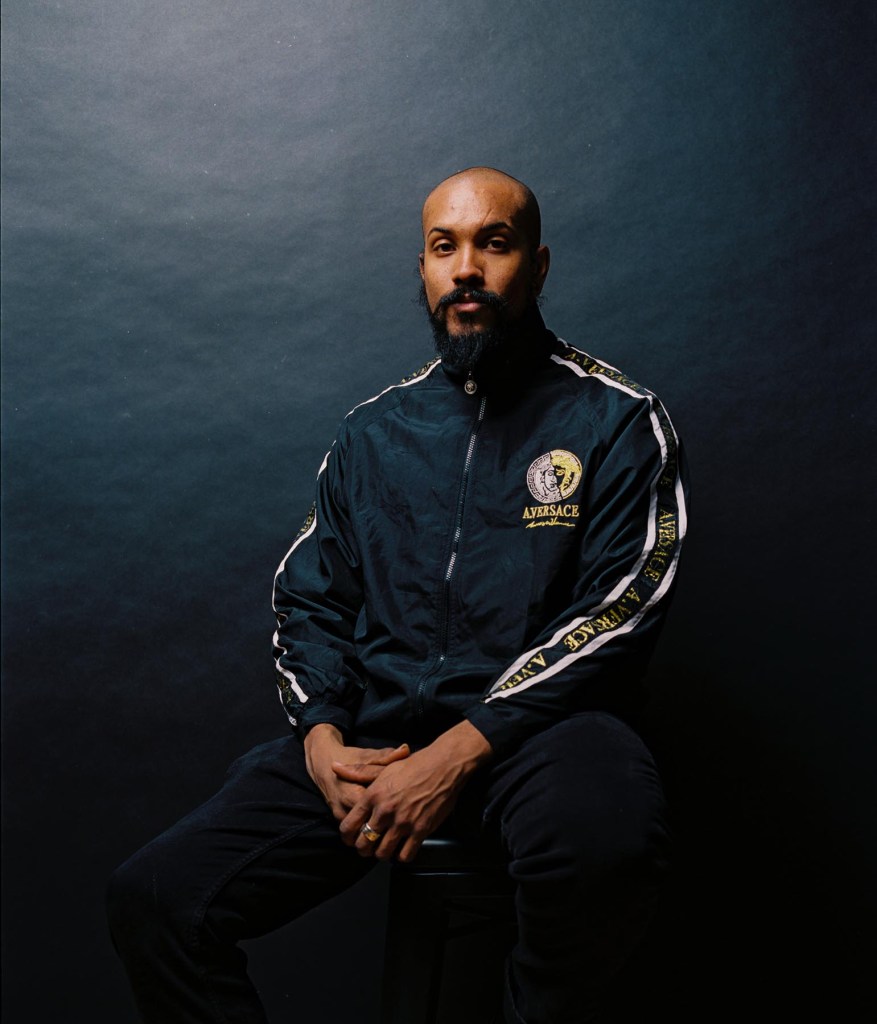
Gabe ‘Nandez
Pablo Isaak Perez
At-times, his rhymes can feel like stream of consciousness journal entries, with existential lamentations and neo-adages like “you don’t hear a crocodile near, you disappear next” from project closer “Crocodile Tears.” The New York-born ‘Nandez is undoubtedly a disciple of his Big Apple predecessors: For one, ‘Nandez references Rakim’s “No Mistakes Allowed” adage on the album closer, and it’s hard not to feel remnants of the God MC in his deliberate rhyme pacing and dense lyricism. In general, he feels like a disciple of many of his Big Apple descendants, with an unflinching mic presence, a knack for assonant lyricism, and couplets like, “there appears to be a bridge between freedom and stack dough/stack the pyramids of Giza, believe in the pharoah” that enmesh spirituality with a thirst for cheddar.
But while it feels like so many spiritually-inclined rappers focused solely on elevation, ‘Nandez has an earthbound vulnerability that adds relatable strands to his music. On “12 Labours of Hercules,” he rhymes, “So my grind incentivized by a force that produce worlds/all my crimes generalized, is it wrong to seduce girls?” At times his divine strivance and base desires alternate from bar to bar, encapsulating the human experience. Elsewhere on the track, by an entrancing horn loop, he sets the thesis for the album — and his catalog in general, with the couplet, “I don’t know bout y’all but I don’t regret a thing/when every single wrong adds a feather beneath my wing.”
The project follows, with Willy lacing him with a soundscape that gives room for him to toil through his thoughts and deliver lessons lke, “dont look for honor in broken man cause it dont exist” from Hieroymus Bosch Levels.” Thoughout his latest work, you feel like you’re witnessing something special happening. you don’t know where it’s going, but ‘Nandez (and Wino Willy) is skilled enough to keep the journey riveting.
Semiratruth, The Star of the Story
Semiratruth anoints themselves the The Star of the Story on their May project, but their voice isn’t heard until midway through the second song of the album. The intro “Fallingin” douses the listener in instrumentation that reorient us into the world they built on their 16-song, 28-minute project.
While the other projects mentioned in this inaugural edition of No Filler are unabashed exhibitions of lyricism, teeming with bars and entrendres, The Star of the Story is a variant showcase; you’re just as likely to hear Semira tearing through her lush, synth-dominated soundscapes as you are to hear her harmonizing like she does on “RunAcrossTheSky.”
The track follows “StoopidScary,” an unabashedly raw track that opens up with the tone-setting couplet, “they think I’m something scary/I think they stupid” before manipulating their voice into warped wails, emphasizing the way we often gawk at things we fear. The minimalist soundscape carries over into “RunAcrossTheSky,” as their melodies loft across the warm synths and chattering percussion. Similarly, “Shadow Humpty” follows “Humpty” by filtering the original beat and replacing Semira’s riff on the classic humpty dumpty tale with discordant vocal runs. It’s as if they’ve equipped their lyrical musings with instrumental tethers that allow their themes to process while one lays in the murkiness of their compositon.
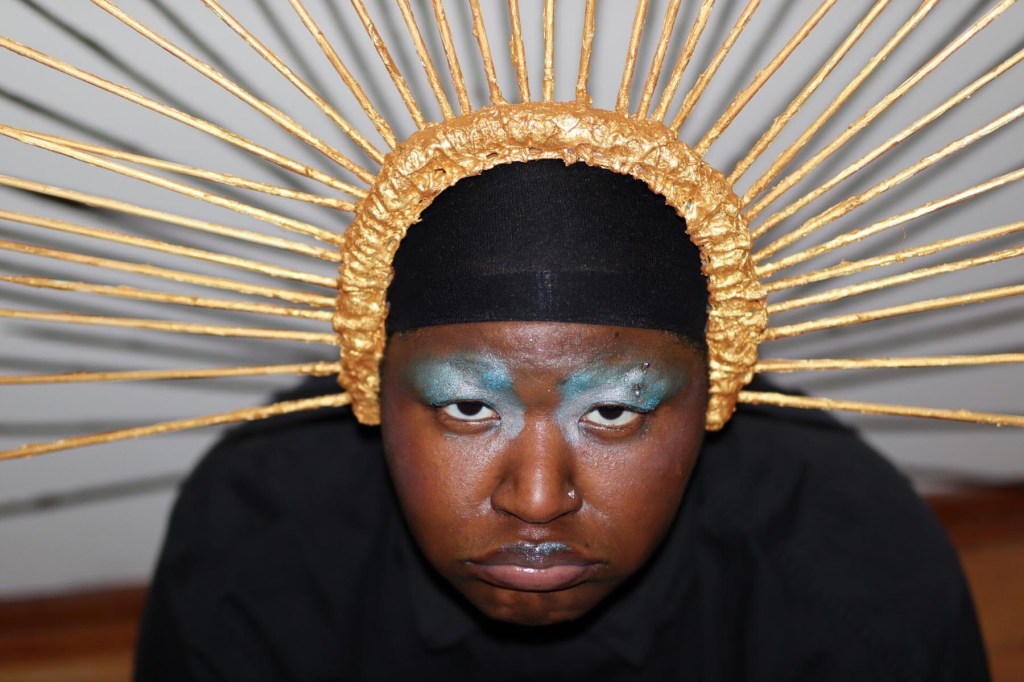
Semiratruth
LIAM BRIGHAM
When Semiratruth chooses to rhyme they do so well, delving into their existential qualms but also showing off their knack for imagery. On “Losemymind” they rhyme, “the sadness creeps in, but only on the weekend,” also lamenting “my homies never wanna invite me to parties” — while stretching “party” for effect. They’re adept at indenting catchy phrases into the beat akin to their instrumentation choices: on “Losemymind,” “it’s only a matter of time until I lose my mind,” and on “Nightmoods” it’s, “What niggas say? ‘We go hard in the paint.’” Semira is adept at knowing when to interlace perfect concert call-and-response moments into their rhymes.
The project is astral-themed, but other universal elements are prominent on The Star of the Story. But for some reason, intentional or not, Semiratruth’s knack for painting a picture manifests the most when it comes to liquids. On “The Story” they rhyme, “only happy in a summer night, sweat drippin down the pipes, fruit ripe mango juice feel nice.” On “It’s Up” they reference their fragrance, and later rhymes, “Who knew outside felt like this?/Fuck the train, smell like piss.” And on “Nightmoods,” they rhyme, “times get hard fill your cup the plank.” It’s the tastes, textures, and smells of life that give it its brilliance, and Semira expertly taps into those in her storytelling.
It would be easy to neatly categorize The Star of the Story as “experimental music,” but what does that dignification actually mean? It feels like the terms centers the musical conventions of genre by castigating any nonconformity into an “experimental” netherworld. The Star of the Story doesn’t feel like it was created in response to anything else, or experimenting in relation to any conventional rubric. There’s no satire, or putdowns of other brands of expression on the project, just the raw reflections of an artist unencumbered with definition — but gifted with a sharp pen.
Chris Patrick, The Calm
New Jersey MC Chris Patrick delves into his recent life and times on The Calm, a nine-track EP. In the past he’s expressed having anxiety about feeling like he’s said everything he could say, but The Calm intro “Numb” indicates no shortage of subject matter. He delves his problems out the gate on the Boi Yanel-produced track, from losing a cousin and having a sick Grandmother to dealing with late rent after being dropped from his label. The song reveals vulnerability as his superpower; if he wanted to be the ever-cool lyricist with a million flows, he could, but he’s not too sophisticated to passionately rhyme, “Working ’til 3 a.m. but at 6 I’m back in my bag/Fuck a self-preservation, I need this shit so damn bad.”
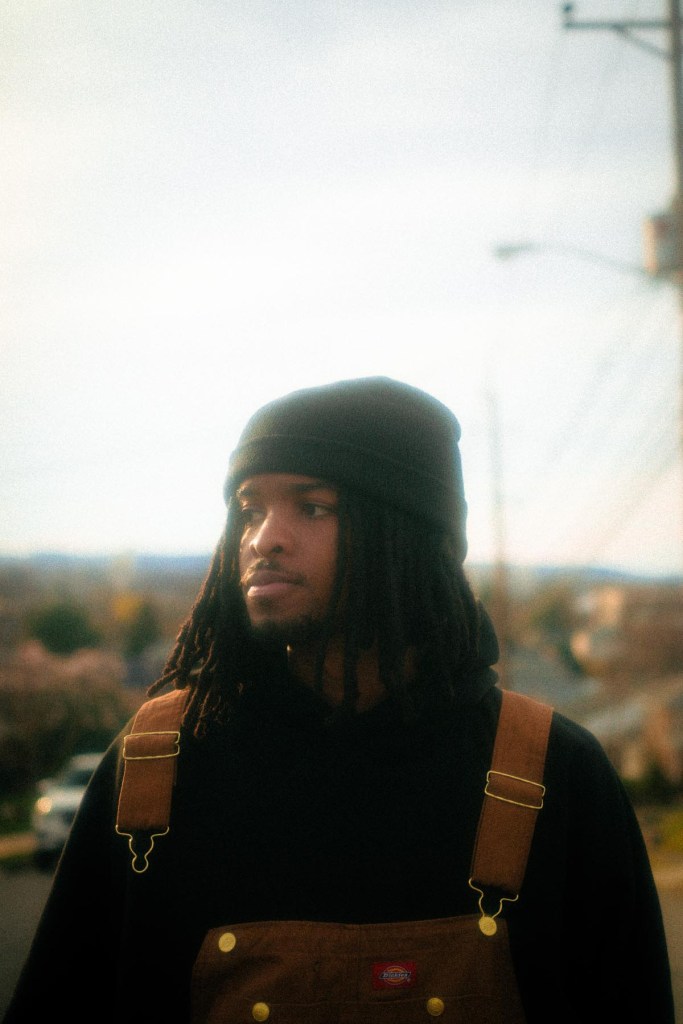
Chris Patrick
HRITWIK CHHABRA
Right after getting personal on the intro, Chris jumps into the braggadocious “Heat Of The Action,” where he shows off a rapid-fire, earworm flow. “Da Beam” is a fiery back-and-forth with Atlanta MC (and Rolling Stone artist to watch) Ben Reilly where he gets into some slick wordplay: “Micheal Strahan with the stick/The way they up quick to get up in that blitz mode.”
But throughout The Calm, Patrick’s most memorable lines aren’t boasts but breakthroughs. “You (LA Girls)” is a love story that rests on the admission that, “I always fall in love with everybody that I mess with.” On “Take Time For Myself” he rhymes, “I used to want to save the world ’till I realized saving the world don’t do much for a nigga/At the end of the day I could die for the cause folk still won’t fuck with a nigga.”
His ability to jump into a variety of melodic flows is apparent throughout the project, on the aforementioned songs as well as “Slide On Me,” which teeters whatever arbitrary lines separate rap and modern R&B. It feels like Patrick is uninterested in boxing himself into a genre categorization, but he’s respectful enough of R&B to offer interesting melodies while maintaining top-tier bars as an MC.
That juxtaposition is most apparent on “Atlanta Interlude,” which begins with lovelorn crooning, but finishes with him eschewing melody and straight-up rhyming, “The truth is that I’m struggling to learn that I’ve hurt people/You tell me I’m good cause you’ve dealt with worse people/Breaking hearts doesn’t mean that I don’t deserve people.” Patrick’s candor, especially in the context of romance, feels refreshing amidst an ecosystem of artists trying to placate an ecosystem that commodifies the performance of manhood.
